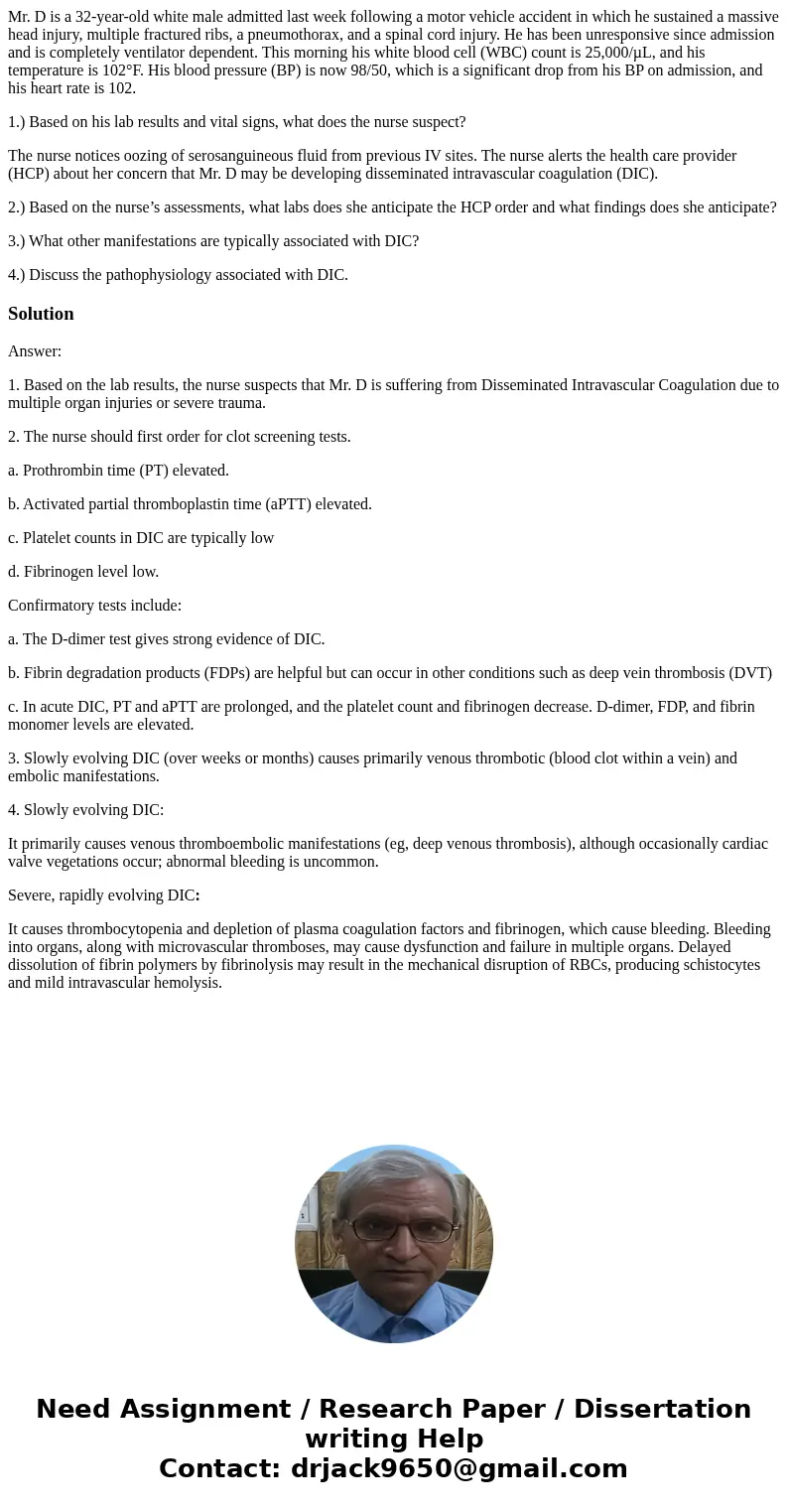Mr D is a 32yearold white male admitted last week following
Mr. D is a 32-year-old white male admitted last week following a motor vehicle accident in which he sustained a massive head injury, multiple fractured ribs, a pneumothorax, and a spinal cord injury. He has been unresponsive since admission and is completely ventilator dependent. This morning his white blood cell (WBC) count is 25,000/µL, and his temperature is 102°F. His blood pressure (BP) is now 98/50, which is a significant drop from his BP on admission, and his heart rate is 102.
1.) Based on his lab results and vital signs, what does the nurse suspect?
The nurse notices oozing of serosanguineous fluid from previous IV sites. The nurse alerts the health care provider (HCP) about her concern that Mr. D may be developing disseminated intravascular coagulation (DIC).
2.) Based on the nurse’s assessments, what labs does she anticipate the HCP order and what findings does she anticipate?
3.) What other manifestations are typically associated with DIC?
4.) Discuss the pathophysiology associated with DIC.
Solution
Answer:
1. Based on the lab results, the nurse suspects that Mr. D is suffering from Disseminated Intravascular Coagulation due to multiple organ injuries or severe trauma.
2. The nurse should first order for clot screening tests.
a. Prothrombin time (PT) elevated.
b. Activated partial thromboplastin time (aPTT) elevated.
c. Platelet counts in DIC are typically low
d. Fibrinogen level low.
Confirmatory tests include:
a. The D-dimer test gives strong evidence of DIC.
b. Fibrin degradation products (FDPs) are helpful but can occur in other conditions such as deep vein thrombosis (DVT)
c. In acute DIC, PT and aPTT are prolonged, and the platelet count and fibrinogen decrease. D-dimer, FDP, and fibrin monomer levels are elevated.
3. Slowly evolving DIC (over weeks or months) causes primarily venous thrombotic (blood clot within a vein) and embolic manifestations.
4. Slowly evolving DIC:
It primarily causes venous thromboembolic manifestations (eg, deep venous thrombosis), although occasionally cardiac valve vegetations occur; abnormal bleeding is uncommon.
Severe, rapidly evolving DIC:
It causes thrombocytopenia and depletion of plasma coagulation factors and fibrinogen, which cause bleeding. Bleeding into organs, along with microvascular thromboses, may cause dysfunction and failure in multiple organs. Delayed dissolution of fibrin polymers by fibrinolysis may result in the mechanical disruption of RBCs, producing schistocytes and mild intravascular hemolysis.

 Homework Sourse
Homework Sourse